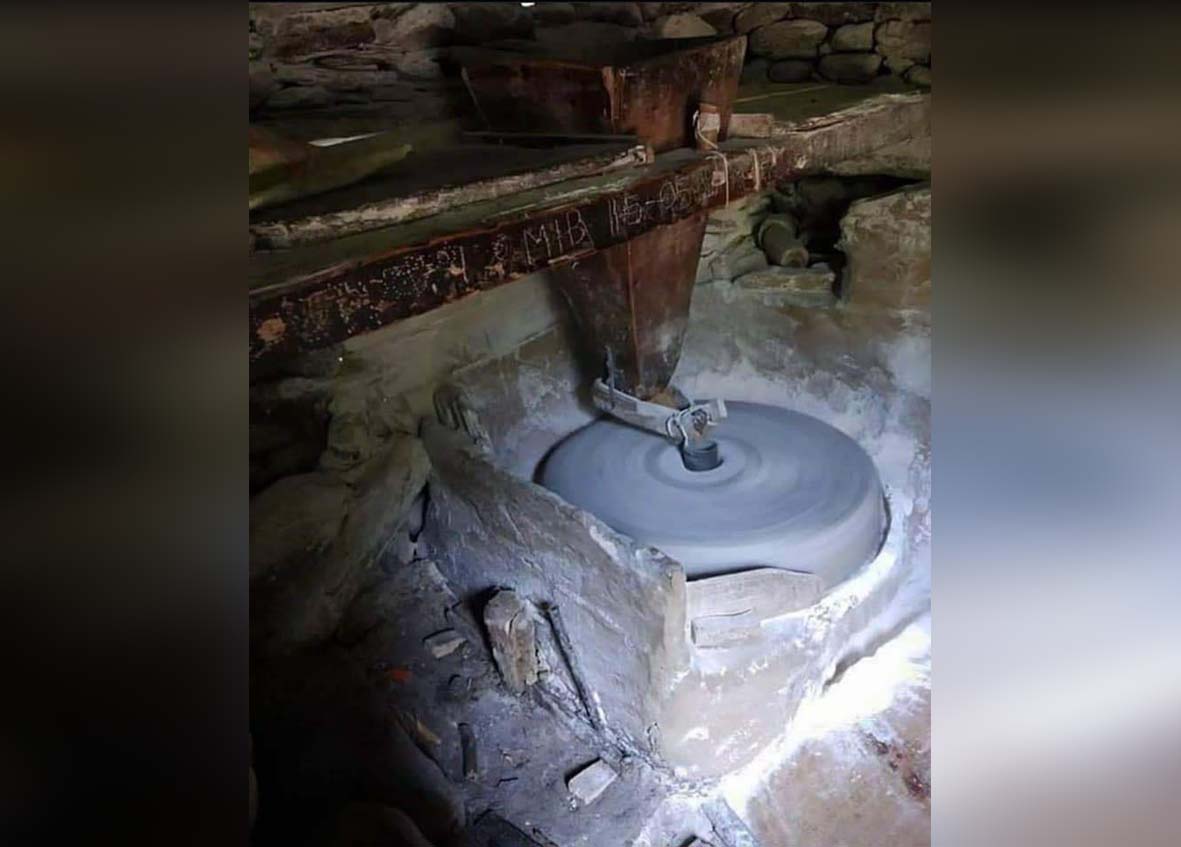Ranjit Thakur
For centuries, Gharats, or traditional water mills, have played a vital role in the rural landscape of Jammu & Kashmir, serving as a sustainable and eco-friendly method for grinding grains. These mills, energized by the currents of mountain streams, were not only crucial for local economies but also woven into the region’s cultural identity. However, the forces of rapid modernization, deforestation, and the rise of electric mills (Chakkis) have nearly pushed these cherished structures to extinction. This decline represents more than just a technological shift; it signifies the erosion of a heritage that was once central to village life.
In villages such as Dessa in the Doda district, the diminishing presence of Gharats is unmistakable. Madho Ram Thakur was the last in his family to operate a Gharat, but since his death, none of his five sons have continued the legacy. Instead, they sought education and employment in urban areas. Now, his neglected mill lies in ruins, with decaying wooden paddles and grinding stones overrun by moss. Local resident Ramesh Kumar recalls, “There were once hundreds of these mills in Doda alone; now, fewer than 50 are left. Poor road access made Gharats essential for grain milling, but their importance has waned.”
The obsolescence of Gharats is further aggravated by the popularity of electric Chakkis. These quicker, less labor-intensive machines have drawn the younger generation away from traditional milling practices. Nasarullah Khan, one of the last remaining Gharat operators in Thanamandi, emphasizes the nutritional advantages of flour ground in Gharats. He explains, “Unlike high-speed electric mills that generate heat and deplete nutrients, Gharats provide slow grinding that retains the fiber and essential vitamins of the grain. Many still prefer this flour,” he states. Nevertheless, significant challenges persist. Diminished rainfall, shrinking streams, and rampant deforestation have impacted water availability, complicating mill operations. “At one time, around 100 Gharats functioned in this area; today, we struggle to maintain even 40,” he adds.
The historical significance of Gharats is well established. Nagendra Singh Jamwal wrote in a 2016 article for Daily Excelsior about their prominence during the Dogra era. The Water Mills (Jandar and Gharat) Act of 1932 aimed to regulate and preserve these mills, assigning specific land records (Khasra Nos.) to them. Colonial accounts, including those by George Forster who visited Jammu in 1783, also documented their widespread existence. In Hamirpur Sidhar, Akhnoor, 22 functional Gharats lined a single tributary of the Chenab River. Similar bustling establishments were once found in Udhampur, Reasi, Ramban, and Doda. In Jammu city, the Pucca Gharat on the Ranbir Canal was a noted landmark before urban development rendered it useless.
Beyond their economic importance, Jamwal argues that Gharats are deeply embedded in the local culture. He mentions that Bhagwat Prasad Sathe’s short story “Mangte Da Gharat,” once part of school curricula, captured the essence of these mills in everyday life. In Poonch-Rajouri, the expression “Ghrate di Raat” (night at the mill) still describes sleepless nights, evoking the relentless sounds of grinding stones and the agitation of rats around flour sacks. In the village of Kaghote, Ramnagar, the Narsingh Dev temple features an idol of Gharati Devta, underlining the reverence traditional millers held for their craft.
From an engineering standpoint, Gharats exemplify sustainable design. Made from locally sourced stone, timber, and mud, these mills harness hydropower without needing electricity or fossil fuels. The Gharatis were not just laborers; they were skilled artisans, expertly fashioning millstones from riverbed boulders and constructing water channels to ensure a consistent flow. However, deforestation and increased water diversion for irrigation and drinking have critically reduced the streams that once powered these mills, hastening their decline.
Despite their significant historical and cultural relevance, Gharats have largely been overlooked by policymakers. When questioned about preservation measures, a senior government official conceded the lack of targeted initiatives. Experts advocate for an urgent census to assess the number of remaining Gharats and evaluate their viability.
The quiet disappearance of Gharats from the landscape of Jammu & Kashmir signifies more than just the loss of an ancient milling technique; it represents the fading of an era where sustainability, craftsmanship, and community life were intricately associated. Without intervention, these once-thriving mills may soon exist only in folklore and distant memories, erased by the unrelenting tide of progress.


Leave a Reply